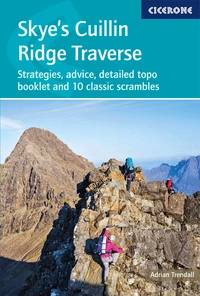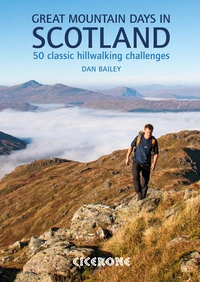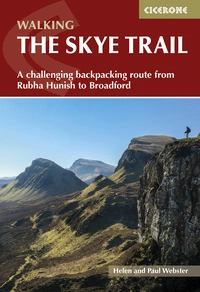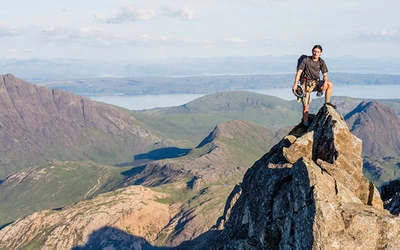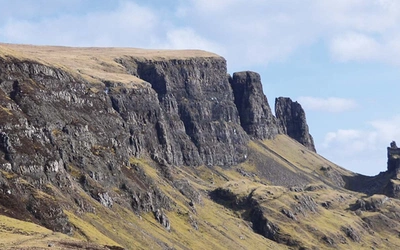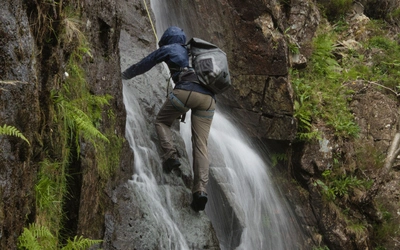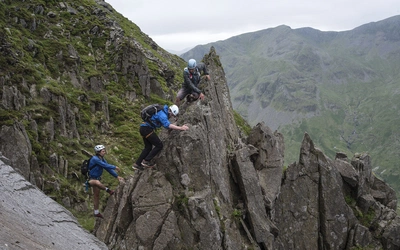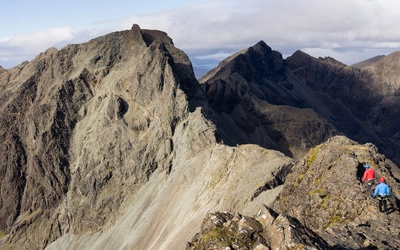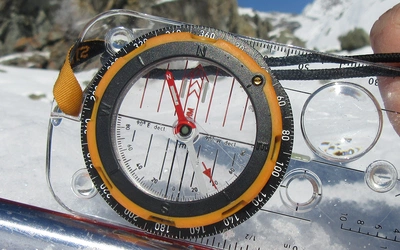Successfully traversing Skye's Cuillin Ridge in winter
A climb of alpine proportions, epic scenery, and mile after mile of ridge make the Cuillin Ridge an adventurous and highly sought-after route that, says Adrian Trendall, should top any winter climber’s tick list.
‘I feel confident that the winter traverse of the main Cuillin Ridge will always retain its place as the greatest single adventure in British Mountaineering.’
Tom Patey (one of the first ascensionists)

Despite living and working on Skye as a mountain guide and photographer, the winter ridge traverse had never really appealed to me. Too many stories of it being a sufferfest, miles of trudging through snow, intricate route-finding and short hours of daylight were enough to put me off.
The winter of 2018 changed my mind. It was a gift that kept on giving, with superb conditions from late autumn right through to May. Lots of people did the ridge and it became apparent that perhaps it was achievable.
Two things initiated this paradigm shift. A stunning long day out on the ridge in perfect conditions was inspirational. With blue sky and sun, conditions underfoot made for swift progress and all in all things felt distinctly alpine. I bumped into a team moving light and fast with only small packs and felt inspired. Weighed down with heavy camera gear, it was amazing to watch teams moving at speed. Coincidentally, this was the very day that Uisdean Hawthorn set the winter record with a stunning time of 4hr 57min and a few odd seconds.
While a good hill day put me in a favourable mindset and seeing teams do the ridge light and fast helped, the biggest single factor for change was John Fleetwood. John is well known for his huge rounds of Munros in adverse conditions and it was his perseverance that finally wore down all my negatives.
According to Gordon Stainforth in his seminal book about the Cuillin, it is ‘without doubt the finest winter mountaineering expedition in Britain, the most alpine in character and yet super alpine in length’. It has become the Holy Grail of winter routes but its reputation puts off a lot of people; it is dismissed as too hard, too long and out of reach, too infrequently in condition.
The chance of success is greater than people think. Prior to our traverse, never in a million years would I have thought it something I would achieve. My main advantages were that I was fit and knew the ridge very well. On the downside, I was 54 and hadn’t done much winter climbing for many years. However, John with his ultra-distance experience and climbing skills, made a good partner and I knew I’d be relying on him.
Secret weapon
John wanted to make a film and I was keen to take lots of photos so we planned to do the ridge over two days, making the most of the daylight to record things digitally. Our secret weapon as ancient climbers was to have a support team who would carry up bivi gear and meet us in Coire Lagan. We got to travel nice and light, which was a huge advantage and certainly added to the pure enjoyment factor.
The first day saw us heading up the west ridge of Sgurr nan Gillean, a route that enabled us to leave our packs at the bealach and race up and down. Conditions were perfect, the nevee making for swift progress, tracks were in from previous parties so no real trail breaking was required. The Bad Step on Am Basteir was totally banked out, then an abseil and down climb led to the Bhasteir Nick and an abseil down King’s Cave Chimney. Massive cornices after Bruach na Frithe made for alpinesque conditions.
The sun came out and we felt warmth on our faces as we looked at the ridge stretching off into the distance. Conditions were perfect. Nicely consolidated snow enabled us to progress relatively fast, although filming and photography slowed things down. Conditions were so ideal that we placed only a single bit of gear on the whole ridge – a sling as we moved together up the In Pinn’s east ridge. The In Pinn was in perfect nick. Although things looked properly wintry, there was little snow and it was basically a rock climb, the warmth of the sun making it feel like an alpine pitch.
Highlights of the day included being on Sgurr nan Gillean, with good visibility and the whole ridge spread out before us. Bidein and the four tops of Sgurr a Mhadaidh were, as ever, complicated, but things worked out perfectly. After the first abseil, John confessed to a total lack of rope management skills, so we came to a happy compromise. I’d sort out the rope and John would carry it; it certainly seemed like a fair division of labour to me!
Lots of time was spent taking photos and filming, so many sections were elaborately choreographed so we could both capture what we wanted. With light packs and warm sun it felt like we were skipping along the ridge on a wave of enjoyment.
Route finding is critical and previous knowledge was definitely a big asset. Much of the route was obvious as we followed tracked out snow, but in places the wind had smoothed things out and footprints led in the wrong direction.
Ropes were used mainly for abseils, of which we did nine. All the anchors were in place. By the last abseil of the first day, which was down the line of King’s Chimney on Sgurr Mhic Choinnic, I was feeling decidedly tired and glad of our planned bivi. Sgurr Thearlaich was a bit of a struggle in deep snow and after an obligatory detour to Sgurr Alasdair we descended The Great Stone Chute where Bridgette, my wife, and Nigel, a friend of John, had established camp.
It still wasn’t dark and we may have been able to struggle on and finish but as it was we had a sociable evening. Down off the ridge, we were nicely sheltered in Coire Lagan. John and I gleefully relived the highs and lows of a long day, grateful for the load carrying by Bridgette and Nigel.
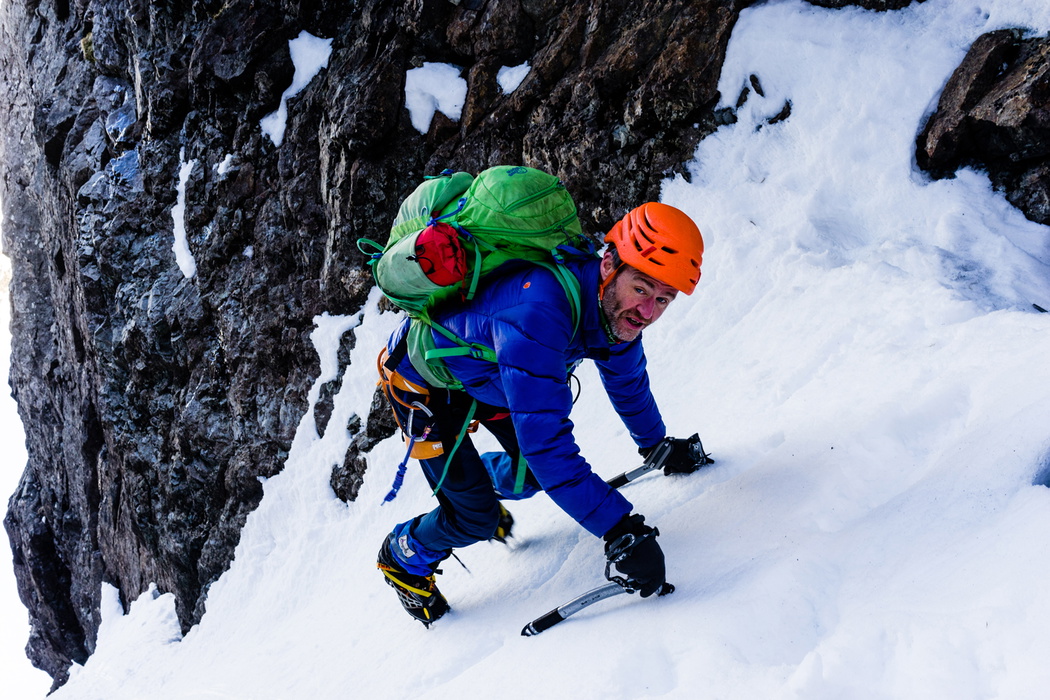
Short diversion
The next day I felt re-energised but John less so as we reascended the Stone Chute. Abseiling into the TD Gap, like most teams we avoided the technical crux of the ridge. Instead of climbing the opposite wall, we descended snow towards Coire a Ghrunnda before rejoining the ridge. With the TD Gap negotiated, barring some unforeseen disaster, the ridge was in the bag.
We both wanted to tick Sgurr Dubh Mor, the outlying Munro, and this proved well worth the short diversion. After that it was a long slog out to Gars-bheinn before walking out to Glen Brittle.
Walking out, we smugly basked in having completed the ridge. I was over the moon, on a real high and had totally enjoyed it. I talked to John about doing the ridge again in the future, but he was adamant that once was enough. It was right up there with the best routes I’d ever done and within two weeks I was given a chance to repeat it.
Through social media I was getting lots of requests for information about the ridge and prevailing conditions. By chance, I struck up an online conversation with Ben Pearce and his partner, Jason Wood. Through the medium of messenger and via the electronic ether we struck up a rapport and teamed up for the ridge. We did it in a single day and the continuous single push was much more enjoyable, although it did make for a very long day.
Doing it in a single push, with minimal gear and no interruption by an overnight bivi was perfect and would be my recommendation. But wWhatever you do, enjoy the Cuillin in winter. It’s a very special place and well worth a visit even if you are not an experienced climber. Coire Lagan is a straight forward walk and peaks such as Bruach na Frithe or Sgurr na Banachdich provide wonderful views and no real technical difficulties other than the ability to use crampons and an ice axe should conditions dictate.
Learn more at Skye's Cuillin Ridge Traverse (has a chapter on the winter ridge, which should provide all the information an experienced team needs), All Things Cuillin website, Instagram and Facebook.
Ten top tips
- A route worth waiting for so get it right. If things hadn’t been perfect then I wouldn’t be writing this or encouraging people. In fact, I wouldn’t have done it.
- Perfect partner(s). Crucial not just for success but also safety. It’s a long route and you need to know you will get on with each other. Play to your strengths. John was the better climber and I was happy that he could lead the more technical bits if needed.
- Knowledge. My main strength in the partnership was my experience of the ridge. Summer knowledge is a bonus but remember that the winter traverse goes in the opposite direction, so winter-specific experience is a huge bonus.
- Light is right. Every gram saved will increase your chance of success. If the conditions and forecast are good then definitely go light. On the second traverse we took a small stove to melt water, which saved weight but also made for some enforced rest breaks. We each took a duvet jacket and had a bothy bag between us should we get benighted. There are so many escape routes that it’s easy enough to be down in Glen Brittle in a couple of hours from most parts of the ridge, so it isn’t as committing as many people think.
- Weather. Clear skies and low winds will obviously be beneficial. Navigation will be easier, and a ridge is no place to be if the winds are high.
- Conditions. Weather is only half the story and conditions underfoot are crucial. Deep, unconsolidated snow may make the ridge look in full winter condition but will make for slow, energy sapping progress. Snow is needed to facilitate speedy movement over boulders and scree but it needs to be compacted to firm nevee to allow rapid, energy-efficient progress. If people have been traversing the ridge then there will be tracks, which aids progress and navigation so keep an eye on social media. Also, all the abseil anchors should be in place, which is both convenient and saves you having to excavate in search of anchors.
- Fitness. The fitter, the better because unless you are an elite mountaineer then it’s going to be a very long day. Climbing ability counts but most important is the capacity to keep going all day on steep, exposed terrain, usually solo and where a slip might be terminal.
- Be slick and quick. Nothing illustrates this better than the abseils. We did nine. It is all too easy to end up with tangled ropes and problems, especially as the day progresses and tiredness sets in.
- Strategy. Decide on your aims and how to achieve them. One or two days? Pre-placed bivi gear. Talk to people who have done the ridge and research it as much as possible.
- Tactics. Remain flexible, since the main aim is to finish the ridge. Bypasses (such as avoiding Bidein by contouring round from Bealach Harta to Bealach na Glaic Moire) may save the day. We were quite happy to bypass the crux exit from the TD Gap. The start and finish points are obvious but what you do in between is very much up to you.
Skye's Cuillin Ridge Traverse
Strategies, advice, detailed topo booklet and 10 classic scrambles
£19.95
This 2-volume set provides all the information required to complete the main ridge traverse on Skye's Black Cuillin. Strategy, gear, training, navigation and logistics are covered. 10 classic Cuillin scrambles are described to use as practice routes. A lightweight second guidebook gives the scrambler detailed maps, topos and route description for the ridge traverse itself.
More information
